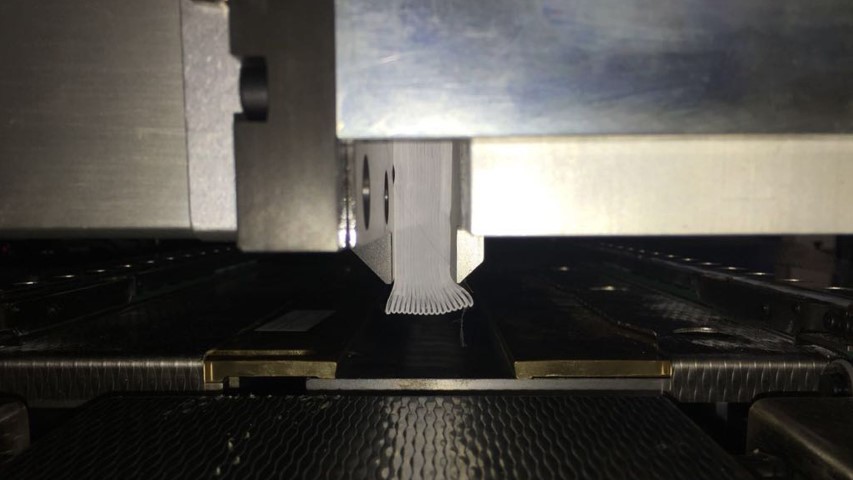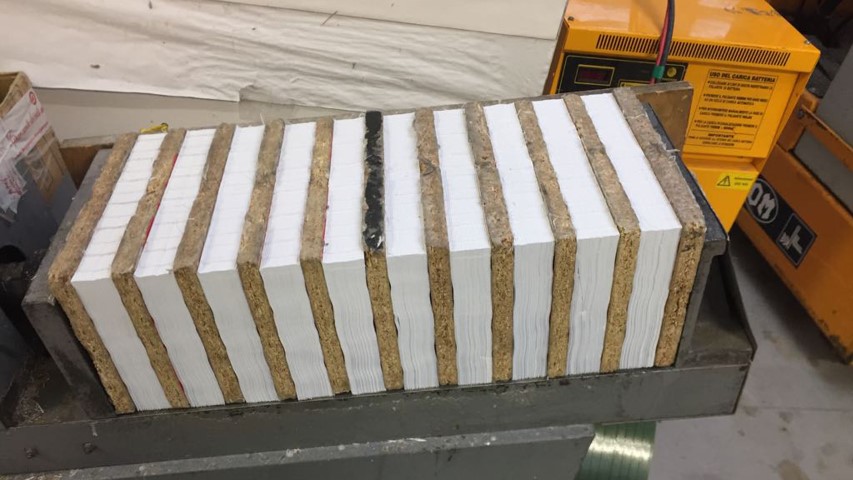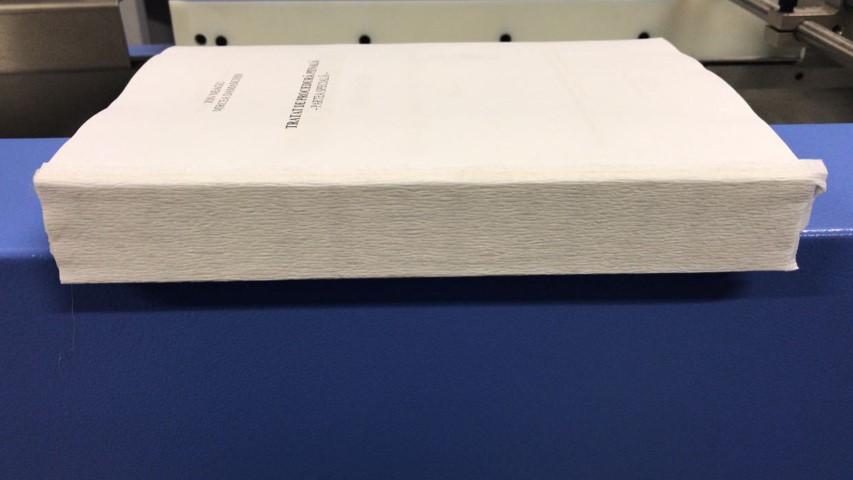Processing thread-sewn book blocks on a perfect binder represents a unique challenge for every bookbinder. This is because, depending on the quality of the thread sewing, the block thickness and the paper used, the so-called “mushroom effect” can damage the print finishing along the spine. But this needn’t be the case.
If the spine profile is more rounded than straight, it will be nearly impossible to apply the glue evenly. And if the lateral profile of the book block is not almost completely rectangular, it will also be difficult to ensure all the settings and process steps for the parameters that are based on the thickness of the book (such as side gluing, backbone scoring and lateral pressing).
Yes, the processing of thread-sewn book blocks on perfect binders is challenging.
But with the right preparation, some bookbinding tricks (which I’ll tell you about below) and the right settings on the Muller Martini Vareo perfect binder, you’ll be able to achieve excellent binding quality.

Incorrect: An unbacked thread-sewn book block cannot be processed.
Correct backing and dampening
In addition to proper climate control (having the same room temperature and relative air humidity for both print finishing and offset printing), which is always helpful, some tricks have proven extremely useful. One important point is to back the thread-sewn book block correctly.
- Correct backing does not mean the book blocks are simply stacked, a wood plate placed above and below the book block and then pressed together with a band. This would only result in waves going through the paper and to all of the blocks as the moisture is released or absorbed – and it would not effectively reduce the mushroom effect. This would also be the case if only cardboard were placed between the book blocks.
Proper backing means placing each book block in a stable wood plate. The stack is then clamped securely, for example with the help of a band, and pressed, ideally for several hours.

Correct: Each book block is backed with a stable wood plate.
- Dampening: In addition to correct backing, another technique that has proven very helpful is using moisture to dampen the thread-sewn spine slightly. A thin layer of water can be applied, for example, with a brush. If necessary, the water can be mixed with some cold glue to form a solution with some adhesiveness.
The process is based on a simple idea – by adding a bit of moisture to the spine area, the gaps in the thread sewing can be sealed somewhat. As a result, the spine glue that is subsequently added in the perfect binder or the glued-off section will adhere to the spine rather than being pressed through the gaps in the thread sewing in the inner folds of the book. This effectively prevents the glue from running off.
By ensuring correct backing and dampening the book blocks slightly, our Vareo users have substantially improved overall processing and boosted the quality of binding.

A good example: a glued-off and folded hardcover book block with a perfectly rectangular spine shape.
Specific Solutions with the Vareo Perfect Binder
In addition to preparing the book blocks before binding, there are a number of options with the
Vareo that make the processing of thread-sewn book blocks extremely easy. For example, when switching from pure softcover production with milled spines to the production of thread-sewn book blocks, the new hangout setting option can be used to automatically adjust the distance between the clamps and the processing stations. For softcover production with milled spines, the hangout should be as small as possible in order to guide the spine during the milling and pressing process and ensure a good rectangular shape. By contrast, for the liner production of thread-sewn book blocks, a large hangout makes it easier to guide the liner tightly and properly – both along the spine and the pages, depending on the lateral liner overlap.
For the softcover production of thread-sewn products with a cover (i.e. without spine preparation), a medium hangout setting can be selected in order to ensure sufficient space for optimal gluing and cover pressing based on the specific spine shape. Depending on the desired product type, the time management of lateral pressing and spine pressing in the rubdown station is also always automatically adjusted.
Thanks to the inclusion of a crash station, there is no longer any barrier to the unique application of a liner stripe with the Vareo. The thickness of each book can be adjusted fully automatically and the overlap of the lateral liner stripe may be symmetrical or asymmetrical and adjusted on each page.
In addition, the Vareo also includes optional interchangeable spare parts for the side-gluing discs and the side printing plates with different contours and heights. The operator can use these to respond ideally to each individual product and thus ensure a high level of binding quality.
And One Final Point
The options available in the Vareo itself as well as the interchangeable parts not only enable the optimal binding of folded and/or thread-sewn products. They also make it possible to produce high-quality special brochures – like Swiss Brochure and Otabind (with special scoring tools). This is a feature that is unique to this class of machine!
Best regards,
Ronald Reddmann
Product Manager, Perfect Binding Systems